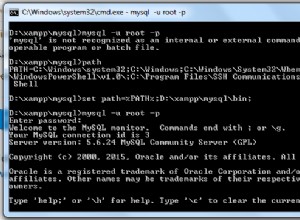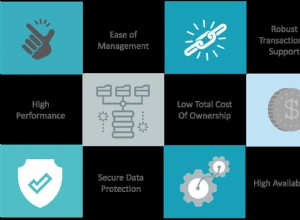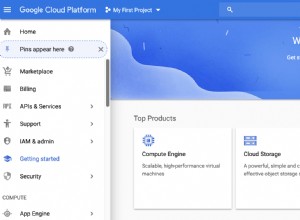Utilizo lo siguiente para los informes de rendimiento de eventos.
Tenga en cuenta que puede manejar tantos eventos separados (por ejemplo, N eventos que codifica por separado) que desee lanzarle.
Lo que hagas como Pasos dentro de tu Evento depende de ti. Tengo una referencia en el Evento a continuación a una tabla que no se muestra aquí, así como lo que hago en el Evento que es personalizado para este negocio. Mostrar todo eso haría que esta respuesta fuera demasiado larga. Si eres programador de eventos, encontrarás tu uso para ello.
Además, el WHILE bucle en mi evento podría no ser lo mejor hasta que codifique algunos eventos simples sin ellos. Si no se retira de manera segura del MIENTRAS, su evento se ejecutará para siempre. Así que tenlo en cuenta si hay algo aquí.
Stub del esquema
La siguiente tabla es utilizada por un evento cerca de la parte superior de su código para realizar una inserción en él, con el único propósito de obtener un id único atrás para su uso en inserciones en la tabla de registro. Expándalo con una columna de fecha y hora o similar. Muestra un usedBy trivial columna para capturar algo al menos, como el nombre del evento. Principalmente, quiere que le devuelvan un auto_incremento asignado (el id ).
drop table if exists incarnations;
create table incarnations
( -- NoteA
-- a control table used to feed incarnation id's to events that want performance reporting.
-- The long an short of it, insert a row here merely to acquire an auto_increment id
id int auto_increment primary key,
usedBy varchar(50) not null
-- could use other columns perhaps, like how used or a datetime
-- but mainly it feeds back an auto_increment
-- the usedBy column is like a dummy column just to be fed a last_insert_id()
-- but the insert has to insert something, so we use usedBy
);
A continuación se muestra una tabla de registro genérica:
drop table if exists EvtsLog;
create table EvtsLog
( id int auto_increment primary key,
incarnationId int not null, -- See NoteA (above)
evtName varchar(20) not null, -- allows for use of this table by multiple events
step int not null, -- facilitates reporting on event level performance
debugMsg varchar(1000) not null,
dtWhenLogged datetime not null
-- tweak this with whatever indexes your can bear to have
-- run maintenance on this table to rid it of unwanted rows periodically
-- as it impacts performance. So, dog the rows out to an archive table or whatever.
);
Un evento de muestra
-- Now the event kicks in on the server on its interval schedule and processes the batch.
-- But we need to modify that Event code because prior all it did was write a row to the log table
-- saying it was looking around. But it didn't actually do anything
drop event if exists `Every_2_Minutes_QuestionUpdateImport`;
DELIMITER $$
CREATE EVENT `Every_2_Minutes_QuestionUpdateImport`
ON SCHEDULE EVERY 2 MINUTE STARTS '2015-09-01 00:00:00'
ON COMPLETION PRESERVE
DO BEGIN
DECLARE bContinue bool default true;
DECLARE counter int default 0;
DECLARE logMsg varchar(1000);
DECLARE incarnationId int default 0;
DECLARE evtAlias varchar(20);
-- right here you could save `now()` into a variable, let's call it STARTEVT
set evtAlias:='ev2minQUI'; -- a shorter unique alias name, max 20 chars
-- Below we must acquire our incarnation id from the control table used for all events
-- that want to use it. It facilitates performance reporting with the use of the `steps` column and the datetime
-- that are put in the EvtsLog table
insert incarnations(usedBy) values (evtAlias); -- see NoteA
select last_insert_id() into incarnationId; -- an auto_increment handed to us by the control table
insert EvtsLog(incarnationId,evtName,step,debugMsg,dtWhenLogged)
select incarnationId,evtAlias,1,'Event Fired, begin looking',now(); -- 1: we are beginning
WHILE bContinue DO -- this is an intermediate-level skills event example. Be careful or you are stuck in the event forever
select min(batchId) into @idToPerform
from EvtsQuestionsToImportBatchHandler -- table not shown in this post on Stackoverflow
where batchStatus=1; -- @idToPerform, a variable, will be null if there is no such row
insert EvtsLog(incarnationId,evtName,step,debugMsg,dtWhenLogged)
select incarnationId,evtAlias,5,'Debug Place 1',now();
IF (@idToPerform IS NOT NULL) THEN
-- This next update line is very crucial, to mark the batch as underway and never picked up again
-- at the top of this WHILE loop (otherwise you may be stuck in here forever)
update EvtsQuestionsToImportBatchHandler set batchStatus=2,dtProcessBegan=now() where [email protected];
set counter:=counter+1; -- used outside of the while loop in the end
insert EvtsLog(incarnationId,evtName,step,debugMsg,dtWhenLogged)
select incarnationId,evtAlias,10,"a message maybe from concat and variables",now();
--
-- Here is where you actually do something
-- Here is where you actually do something
-- Here is where you actually do something
insert EvtsLog(incarnationId,evtName,step,debugMsg,dtWhenLogged)
select incarnationId,evtAlias,20,"a message maybe from concat and variables",now();
-- Here is where you actually do something
-- Here is where you actually do something
-- Here is where you actually do something
insert EvtsLog(incarnationId,evtName,step,debugMsg,dtWhenLogged)
select incarnationId,evtAlias,30,"a message maybe from concat and variables",now();
-- mark this batch as done:
update EvtsQuestionsToImportBatchHandler set batchStatus=3,dtProcessFinished=now() where [email protected];
ELSE
set bContinue=false; -- we are done with the event loop
END IF;
-- if bContinue is true, we will seek the next batch to process that has batchStatus=1, if there is one
-- right here a new now() could be performed, and a timediff() against the STARTEVT
-- to determine if you want to bail out also with a " set bContinue=false; "
END WHILE; -- this is an intermediate-level skills event example. Be careful or you are stuck in the event forever
-- this msg is crucial to see in the log table to know you are not locking in an endless WHILE loop
set logMsg:=concat("Number of batches processed=",counter); -- concat example (could have been used above)
insert EvtsLog(incarnationId,evtName,step,debugMsg,dtWhenLogged)
select incarnationId,evtAlias,90,logMsg,now(); -- 90: we are almost done
insert EvtsLog(incarnationId,evtName,step,debugMsg,dtWhenLogged)
select incarnationId,evtAlias,99,'Event Done',now(); -- 99: we are done
END$$
DELIMITER ; -- sets the delimiter back to what we are used to, the semi-colon
Naturalmente, obtendrá informes de rendimiento en la tabla de registro que incluye incarnationId , evtName , step y la fecha y hora. La siguiente consulta colapsa la información de eventos de múltiples filas a 1 fila por ejecución de evento, con una diferencia de tiempo.
select incarnationId,dtBegin,dtEnd,TIMESTAMPDIFF(SECOND,dtBegin,dtEnd) as secDiff
from
( select incarnationId,min(dtBegin) as dtBegin,max(dtEnd) as dtEnd
from
( select incarnationId,
case
when step=1 then dtWhenLogged
end as dtBegin,
case
when step=99 then dtWhenLogged
end as dtEnd
from evtsLog
where evtName='evtName01'
) d1
group by incarnationId
) d2;
+---------------+---------------------+---------------------+---------+
| incarnationId | dtBegin | dtEnd | secDiff |
+---------------+---------------------+---------------------+---------+
| 101 | 2016-05-01 14:02:00 | 2016-05-01 14:02:01 | 1 |
| 102 | 2016-05-01 14:02:01 | 2016-05-01 14:02:07 | 6 |
+---------------+---------------------+---------------------+---------+
Para informes más precisos en microsegundos, se requiere MySQL 5.6.4 o superior. Vea esta respuesta .
Los eventos son complicados de escribir ya que no hay UX asociado con ellos. Mediante el uso de una tabla de registro, no solo puede obtener informes de rendimiento, sino también adquirir información con los mensajes de depuración durante su desarrollo.
No olvide podar la tabla de registro para mantener su tamaño bajo control. Tal vez archivándolo en algún lugar (¡quizás a través de otro Evento!).




